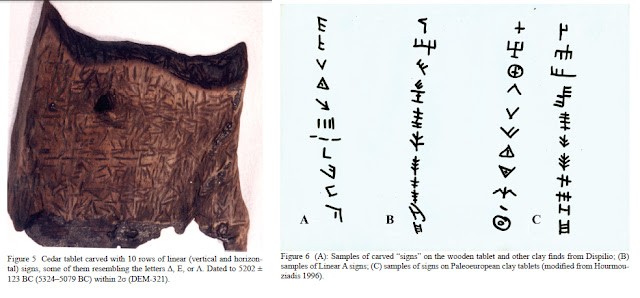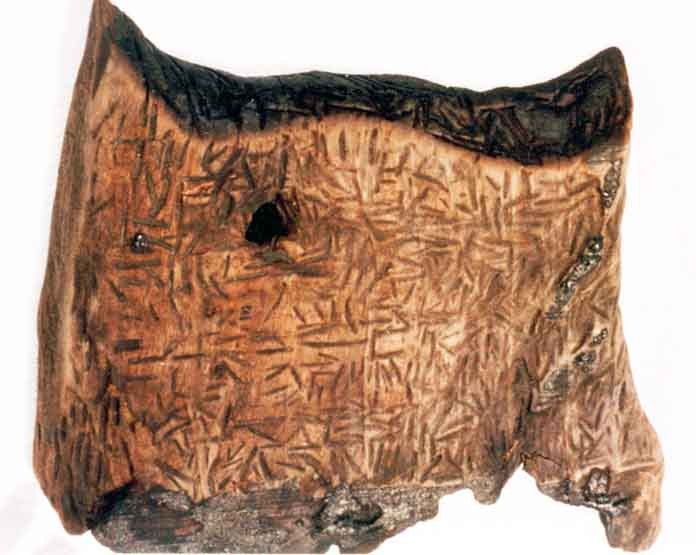
The discovery of the Dispilio Tablet has fascinated archaeologists and historians alike, offering a rare glimpse into the dawn of human communication. Found near Lake Kastoria in Greece, this wooden artifact, dating back to around 5,260 BCE, contains a series of inscribed symbols that might represent one of the earliest known forms of writing in Europe.
Understanding the Dispilio Tablet meaning is essential not only to trace the roots of writing but also to comprehend the culture and lifestyle of Neolithic societies that lived over 7,000 years ago. This article explores the tablet’s significance, its inscriptions, and what it reveals about prehistoric human interaction.
What Is the Dispilio Tablet?
In 1993, a remarkable archaeological find emerged from a prehistoric lakeside settlement near the village of Dispilio, in Western Macedonia, Greece. Among the artifacts recovered was a wooden tablet bearing a series of carved symbols, now famously known as the Dispilio Tablet.
Unlike stone or clay, wood rarely survives for millennia, making this discovery exceptional. The tablet is roughly the size of a modern notebook and is covered in incised marks and lines, arranged systematically. Researchers believe these symbols could represent a form of proto-writing, predating established scripts like cuneiform and Egyptian hieroglyphics.
The Meaning Behind the Dispilio Tablet
Deciphering the Dispilio Tablet meaning remains a challenge for experts. Unlike alphabetic writing, these symbols might not correspond directly to language but could represent numerical data, calendrical information, or records of economic activity, such as trade or agricultural cycles.
The tablet suggests that Neolithic communities in the region were engaged in complex social structures requiring record-keeping. This pushes back the timeline for the emergence of writing systems in Europe and emphasizes the intellectual sophistication of these ancient peoples.
Archaeological Context and Importance
The Dispilio settlement itself is a well-preserved prehistoric lakeside village dating back to the 6th millennium BCE. It includes dwellings, tools, pottery, and food remains, providing a comprehensive picture of life during the Neolithic period.
The Dispilio Tablet meaning goes beyond just the symbols on wood—it symbolizes early human attempts at documenting knowledge and communicating beyond oral traditions. Such proto-writing could have served as an administrative tool, a mnemonic device, or a religious artifact.

Comparative Insights: Proto-Writing Around the World
While the Dispilio Tablet is unique in its European context, proto-writing is known elsewhere. For example, the Vinča symbols in the Balkans or the Jiahu symbols from Neolithic China represent early attempts to encode information visually.
These global parallels highlight how human societies, separated by geography, evolved similar means to communicate complex ideas before formal writing systems developed.
Preservation and Study of the Tablet
Due to its wooden composition, the Dispilio Tablet required careful preservation techniques to prevent decay. It is now housed in the Archaeological Museum of Kastoria, where ongoing studies continue to shed light on its inscriptions.
Modern technologies such as 3D scanning and digital imaging allow researchers to analyze the tablet’s markings in detail without physical interference. This aids in understanding the Dispilio Tablet meaning and its place in the history of human communication.
Why the Dispilio Tablet Matters Today
The tablet is more than an archaeological curiosity; it connects us to our ancestors’ earliest intellectual achievements. It challenges the notion that writing began solely in Mesopotamia or Egypt and emphasizes Greece’s vital role in prehistoric cultural development.
For educators, historians, and enthusiasts, the Dispilio Tablet is a testament to the creativity and adaptability of early humans, showcasing how they began to capture and transmit knowledge across generations.
Trusted External Sources:
-
For more on Neolithic archaeology in Greece, visit the Hellenic Ministry of Culture and Sports: culture.gov.gr
-
Explore research on early writing systems at the Institute for the Study of Ancient Writing: isawe.org
-
Learn about prehistoric European societies from the European Association of Archaeologists: e-a-a.org
FAQ: Dispilio Tablet Meaning
Q1: What exactly is the Dispilio Tablet?
A1: The Dispilio Tablet is a wooden artifact discovered in a Neolithic settlement in Greece, inscribed with symbols that may represent one of the earliest forms of proto-writing in Europe.
Q2: How old is the Dispilio Tablet?
A2: It dates back to approximately 5,260 BCE, making it over 7,000 years old.
Q3: Has the Dispilio Tablet been fully deciphered?
A3: No, researchers have not fully deciphered the symbols yet. The tablet likely contains proto-writing related to record-keeping or communication.
Q4: Why is the Dispilio Tablet important?
A4: It challenges the traditional timeline of writing development, showing that European Neolithic societies engaged in symbolic communication far earlier than previously thought.
Q5: Where is the Dispilio Tablet now?
A5: It is preserved and displayed at the Archaeological Museum of Kastoria in Greece.
Q6: Are there other similar proto-writing artifacts?
A6: Yes, other examples include the Vinča symbols and Jiahu symbols, showing that early symbolic communication was widespread across ancient societies.




